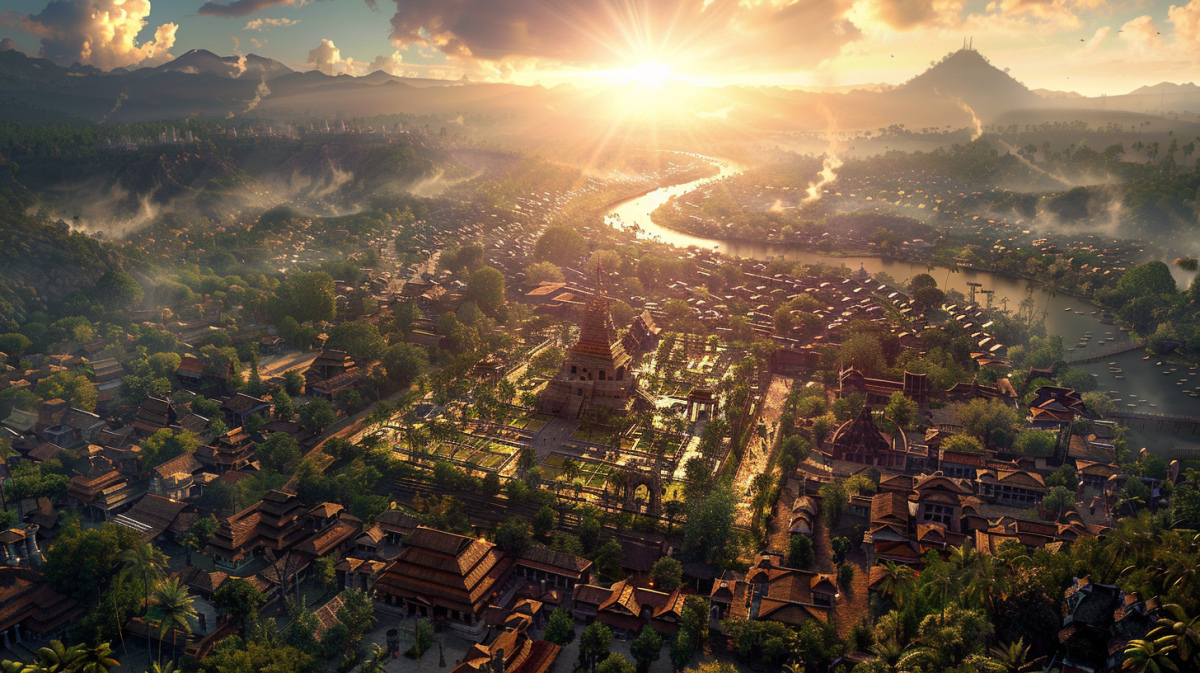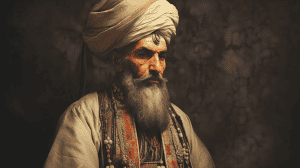The Kingdom of Loango, located in today’s Republic of Congo, flourished from the 15th to 19th centuries. A major coastal kingdom, it thrived on trade, notably in ivory and slaves. European contact, especially with the Portuguese, influenced its political and economic dynamics.
Origins of the Kingdom of Loango
The enchanting realm of Loango is notably absent from early explorers’ chronicles, as well as King Afonso I of Kongo’s titles in 1535. It is therefore plausible that no significant power existed along Central Africa’s coastline north of the Congo River during this time.

Once intimately connected to the formidable Kongo Kingdom, the Kingdom of Loango was governed by the Vili, a Kongo people who ventured to the coastal region in the 1300s. Loango blossomed into an independent state, likely towards the end of the 14th or the beginning of the 15th century. Along with two other Kongo-related realms, Kakongo and Ngoyo (present-day Cabinda), the Kingdom of Loango emerged as a vital trading state north of the Congo River.
The economy of the Kingdom of Loango
In the 17th century, intrepid Vili merchants embarked on daring journeys far from their homeland, seeking the thrill of commercial ventures. Some of the earliest recorded trips included visits to copper mines in Mindouli and the enigmatic “Bukkameale” territory (possibly the Niari Valley). Dutch records from the era reveal that the Kingdom of Loango supplied the European market with a significant amount of copper. Additionally, Loango was a prolific producer and exporter of cloth, trading with both the interior and the Portuguese in Luanda, where thousands of meters of Loango cloth were imported in the early 17th century.

Government structure of the Kingdom of Loango
In theory, the kings of the Kingdom of Loango wielded absolute and divine power. In the 17th century, the king appointed numerous provincial governors from his own family. The only comprehensive account of the Kingdom of Loango’s government from this time is Olifert Dapper’s description from around 1640. The king ruled tightly over a cluster of villages and small territories in the province of Loangogiri, while other districts further afield were typically governed by their own elite under the watchful eye of royal officials. Mayumba, Dingy, and Chiloangatiamokango, for example, were overseen by nobles appointed from the court, while Gobby was not under any royal supervision.
In the central district, each village or neighbourhood was governed by a noble appointed by the king, who also selected a substantial number of councillors.

Despite the passage of time, reports on Loango’s government in the late 18th century reveal little change in the underlying principle; royal despotism still bore the air of divine right, and the king’s religious power was considerable. Free citizens were required to pay taxes on their persons, the land they cultivated, and the livestock they owned. Royally appointed officials governed at the provincial and village level, collecting taxes and performing judicial tasks in the king’s name. However, they were known to occasionally overcharge taxes, taking four goats, for example, when they were only meant to collect three. The royal council housed a variety of bureaucratic offices, each overseen by key officials who managed different aspects of the kingdom’s affairs.
The king demonstrated a fervent interest in the administration of justice. He devoted much of his time to hearing cases and resolving disputes. However, Abbot Proyart, who documented these institutions, believed that royal officials frequently abused the king’s decisions and made excessive demands, causing “turmoil and desolation across entire provinces.”
Religious beliefs in the Kingdom of Loango
Dutch visitors from the first half of the 17th century provided a vivid account of Loango’s religious beliefs, particularly as reported by Olfert Dapper. They observed that the people of Loango believed in a supreme being, whom they called “Sambian Ponge” (modern Kikongo: Nzambi a Mpungu). However, they seemed content to know only his name and showed little desire to learn more about him.
Cosmology was not dictated by a centralised authority. Various beliefs circulated in the 17th century regarding the fate of the deceased: some held that they were reborn through reincarnation, others that the soul simply ceased to exist, and still others believed the soul transformed into a deified “hero.”
Dapper also noted that an nkisi (“mokisie”) was a neutral term for all types of divinity, neither inherently good nor evil. While these deities had specific domains within the natural world, they were also tied to particular locations, although they could accompany people on their travels. New deities were constantly created, competing for authority, and people judged them based on their effectiveness. Priests, known as “Enganga Mokisie” (modern Kikongo e nganga nkisi), employed elaborate ceremonies to channel a divinity, establishing a continuous revelation to identify a protector for a household or community.
Dapper further provided descriptions of numerous regional shrines. Thiriko was in a village of the same name, housing a large shrine in the shape of a man, which protected the general welfare of the area. An nkisi featured a square pouch made from lion’s skin, filled with shells, stones, iron bells, and other elements. Portable and handy, travelers and merchants carried such pouches on their journeys. In the town of Kiko, an nkisi called Lykikoo took the form of a wooden statue shaped like a man. This deity protected the people of Kiko from death and even commanded the dead to work for him. Malemba appeared as a mat adorned with baskets brimming with various ingredients, safeguarding the king’s health. Other nkisi, such as Makongo, Mimi, Kossie, Kitouba, Kymayi, Injami, Panza, Pongo, and Moanze, were all regional or town shrines, typically featuring carved staffs, baskets, and other items filled with shells, horns, vegetable matter, and the like, which were characteristic of such sacred spaces.
Related Posts
Sources
“Kingdom of Loango,” Encyclopædia Britannica, accessed April 19, 2023, https://www.britannica.com/place/Kingdom-of-Loango.
“Kingdom of Loango,” Wikipedia, last modified October 20, 2021, https://en.wikipedia.org/wiki/Kingdom_of_Loango#The_Loango-Vili_diaspora.
“Loango Coast,” National Museum of African Art – Smithsonian Institution, accessed April 19, 2023, https://africa.si.edu/exhibits/loango/lmap.htm.





